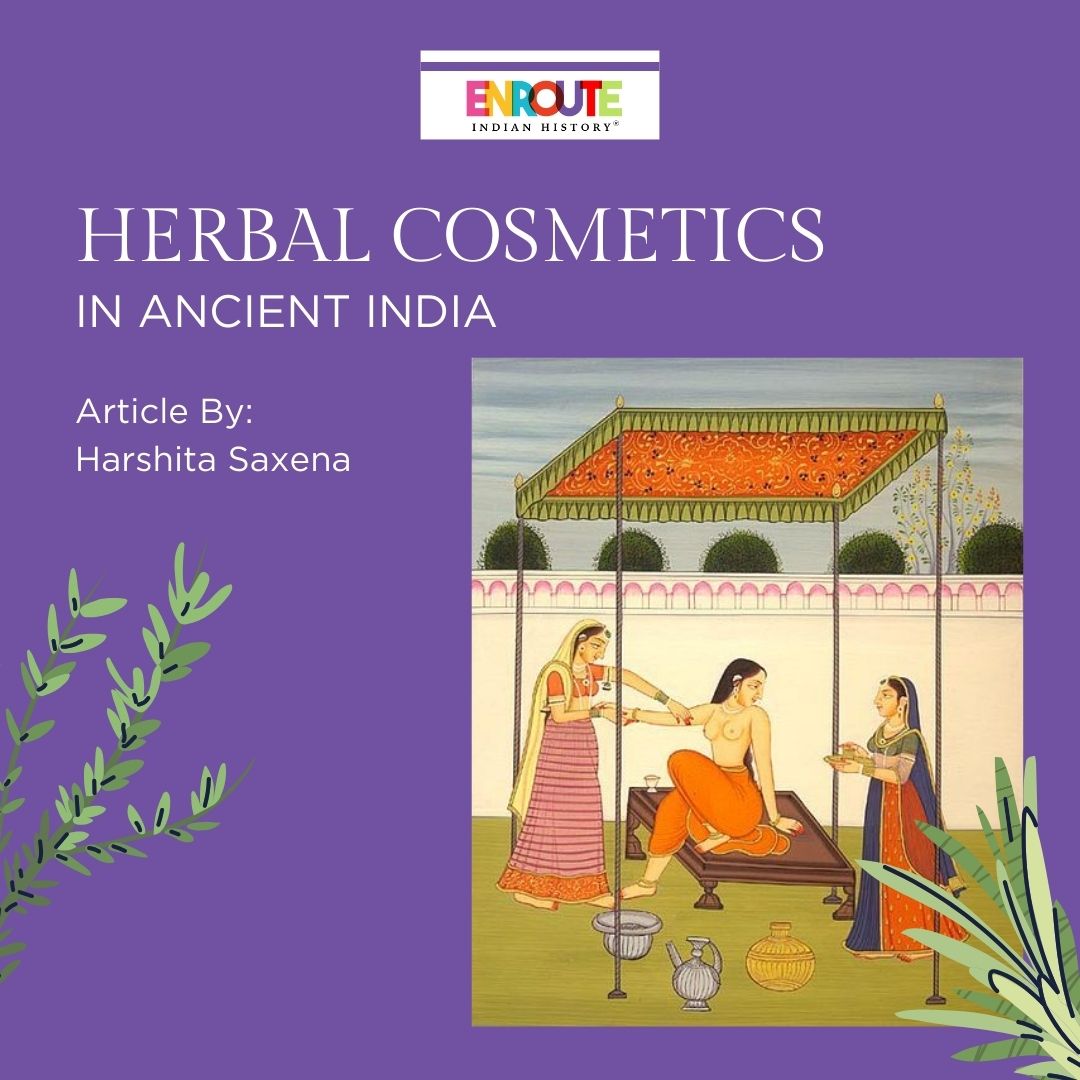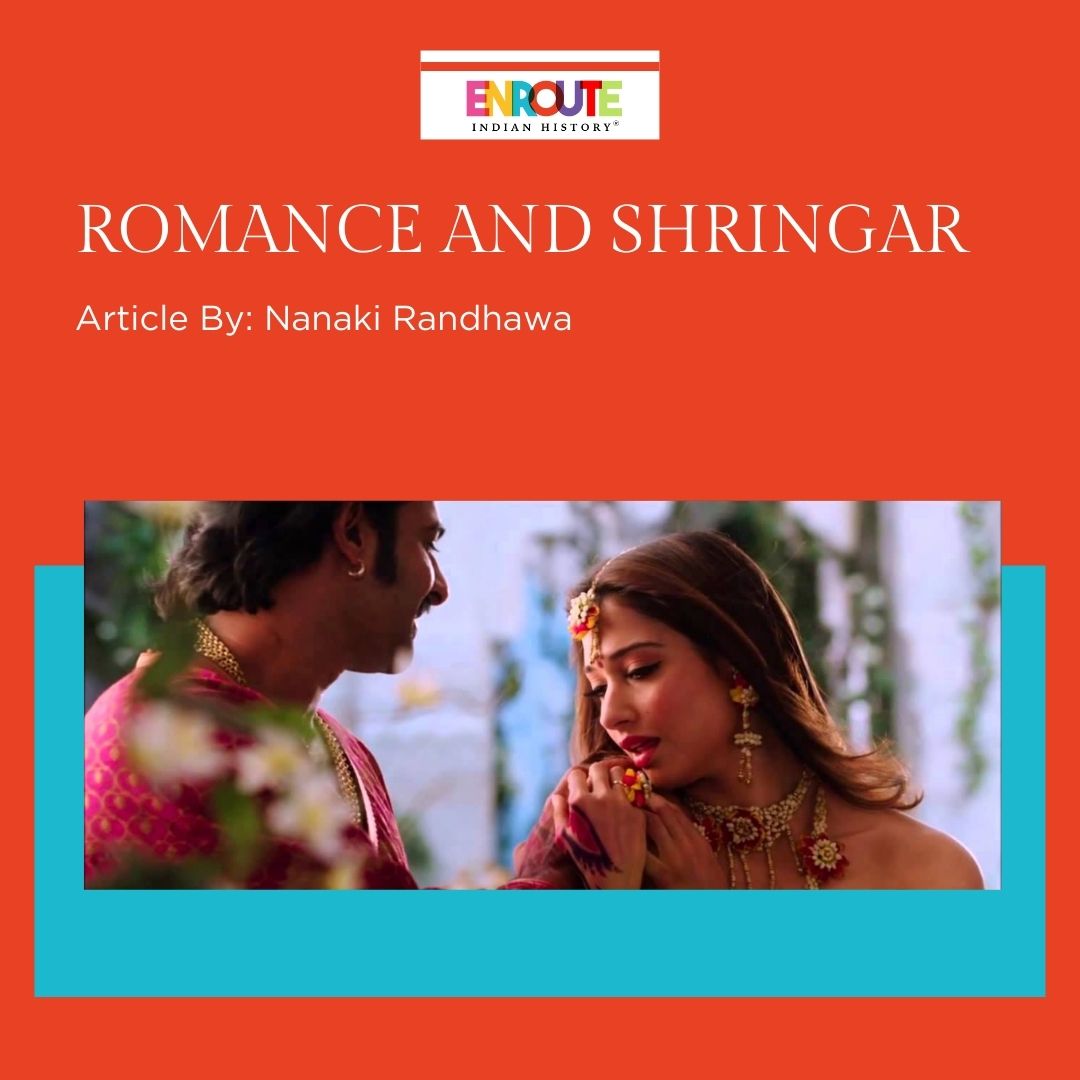ALTA: THE RED INDIAN DYE AND ITS SIGNIFICANCE.
- enrouteI
- September 18, 2023
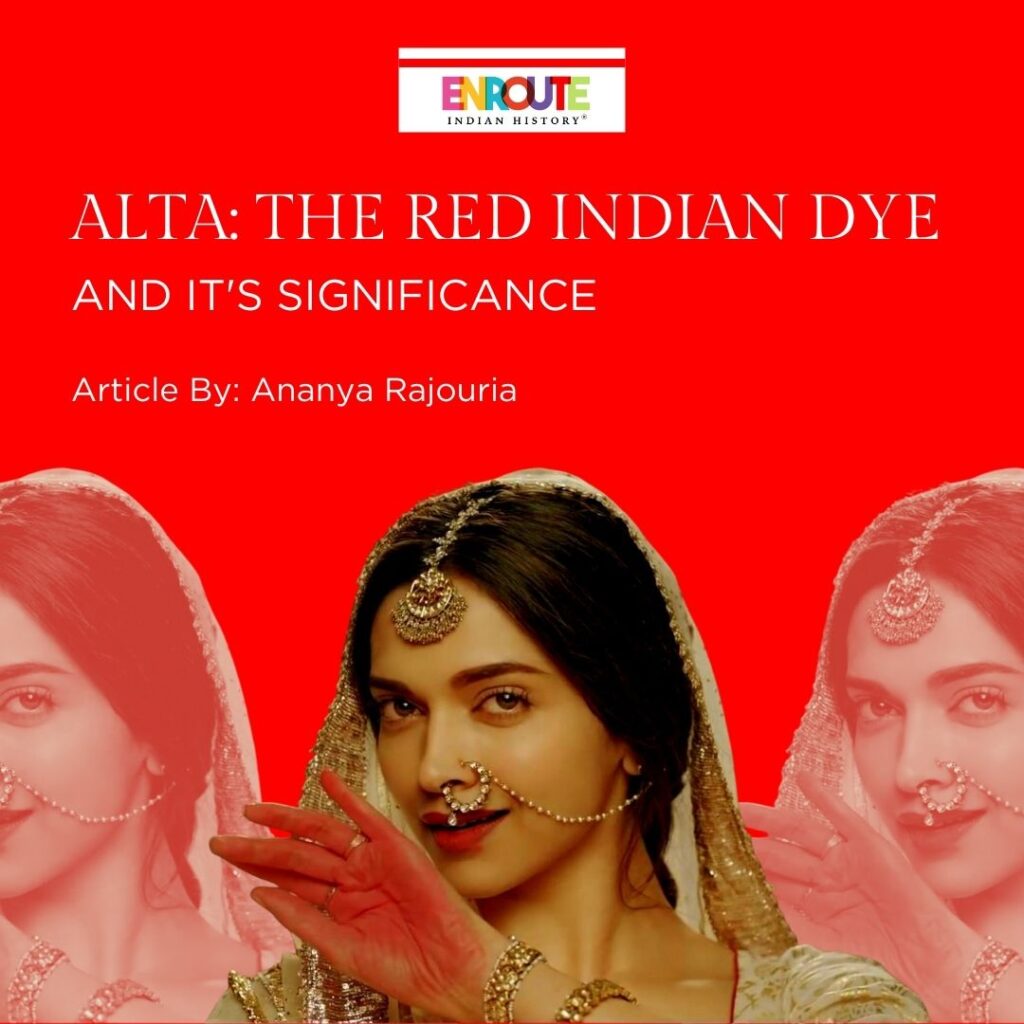
“RED IS NOT SEASONAL, IT’S ICONIC,” read the collection of the famous Indian designer Sabyasachi’s recent bridal collection show. The statement stands true for the traditional Indian married woman, and what forms a unique part of her attire is the Indian dye, Alta. Alta derives its historical reference from the Sanskrit word ‘Lakshaya Rasa,’ meaning Lac. It is an eco-friendly and sustainable Shringaar native to the Indian subcontinent. Bright red, the traditional Alta was made with the help of beetle levees, nuts, and lac. The beetal leaves were left soaked in water for a long time resulting in a thick red color. Painting the soles with this red dye and adorning the upper foot with elaborate designs to bring out the beauty of a traditional Indian bride is a common practice in the north, central, and eastern parts of India. How Alta gained this much significance in Indian cosmetics is difficult to trace. However, the history of Alta can be pushed back to the Upanishads where it is mentioned as one of the ‘Solah-Sringaar’ or bridal ornaments. Alta’s reference can also be found in many Sanskrit literature such as Kalidasa’s Abhijnyana-Shakuntalam where the protagonist – Shakuntala is mentioned adorning her hands and feet with this red dye.
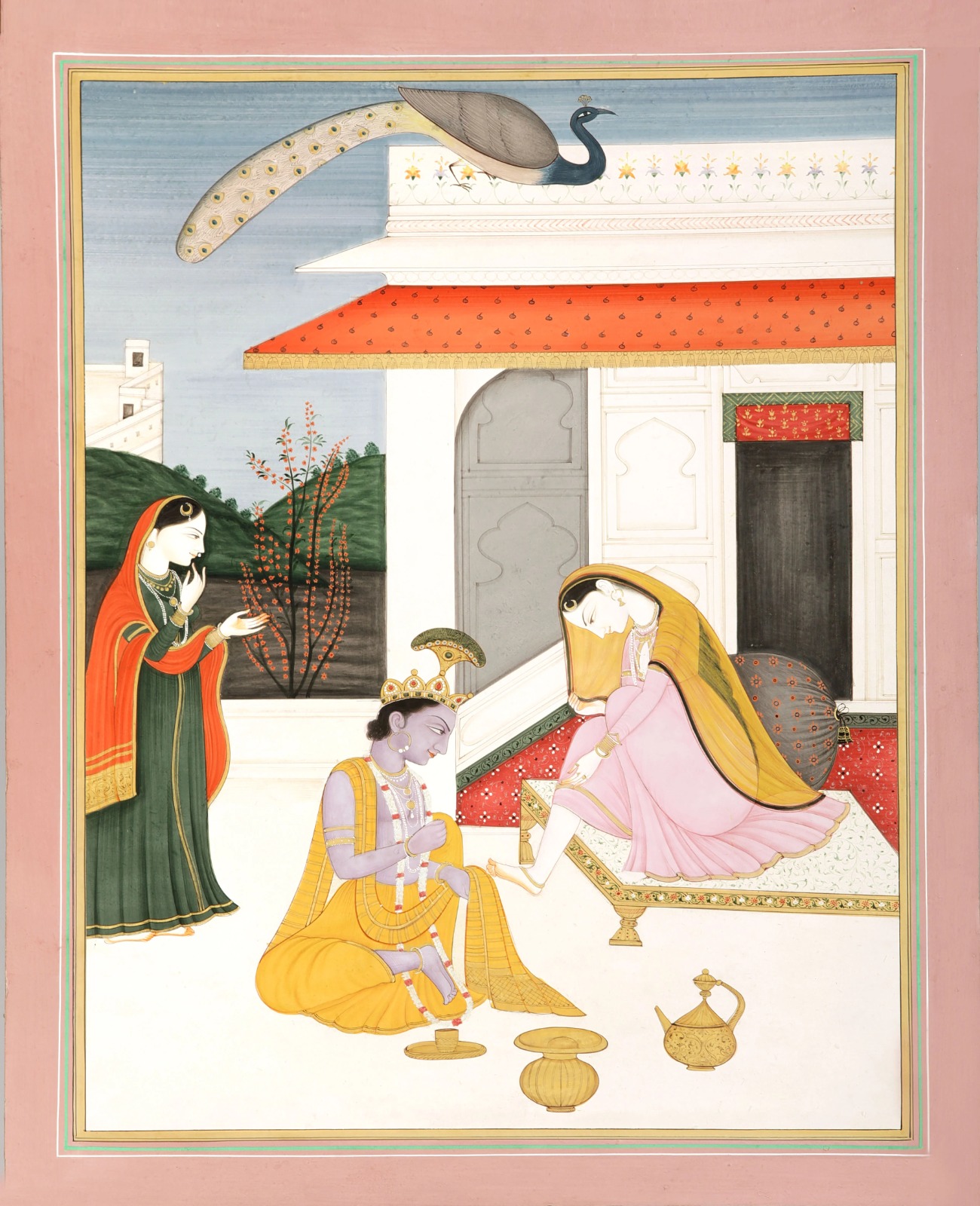
(Source; Exotic India Art; An artist’s representation of Krishna applying Alta on Radha’s feet)
While Alta’s most evident visual reference is associated with Hindu goddesses, Lakshmi, and Durga, it is interesting to note that Krishna, a male deity is very frequently associated with wearing Alta. Krishna adorns the red dye on his palms and feet, he even wears a nose ring and anklets and stands with a bent stance –Tribhanga, which is ‘feminine’ in nature that earns him the title, Banke Bihari. The feet of Krishna performing Raas-leela with gopis are soaked red in Alta and almost seem like those of a dancer. Even the famous Thumri composition – ‘Nar ko Naari Banao’ describes the women of Gokul grabbing little Krishna and making him wear a skirt and dyeing his hands and feet red with Alta. The famous 12th century poet Jayadeva in his composition ‘Gita-Govind’ depicts the love of Radha and Krishna and the spring rite. In one of the scenes, Radha accuses Krishna of betraying her when she sees the marks of Another woman’s Alta on Krishna’s body. In another instance, Krishna is seen applying Alta on Radha’s feet.
The red color of Alta represents the Suhaag of a married woman and is almost an inseparable part of a bride in Bengali culture. Applying Alta in Bengali cultural history is equivalent to applying Mehendi. It’s the ‘Red Henna’ and a Bengali bride is incomplete if her hand, feet, and at times brow lines are not beautified with traditional red and white designs. Sometimes dark pink colour is also applied, known as Mahvar. The red color of the Alta represents her ‘ love, ardent affection, passion, and sacrifice for her Suhaag. Red is a color that is also attached to fertility and passion between the couple. When a bride wears a red Saree it is to associate herself with goddess Lakshmi and on the other hand the red Shringaar is to please the goddess Lajja Gouri, the goddess of fertility for a good marital life and a long life for her husband. Apart from the religious connotations, the red Alta dye also has scientific properties, It has a cooling effect on the body, and the application of the same on cracked heels is medicinal to prevent bacterial infection.
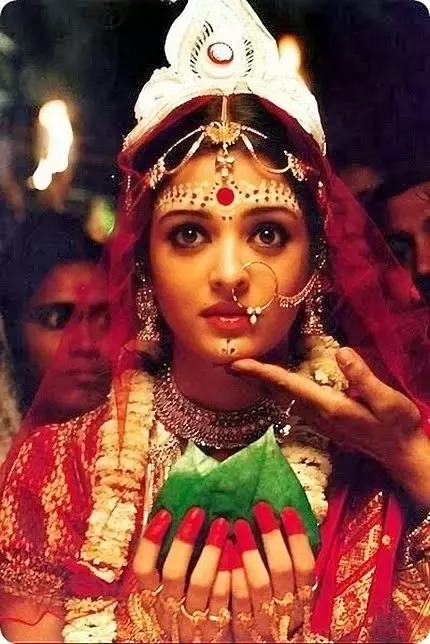
(Source: Public Domain; Aishwarya Rai depicting a Bengali Bride, her face and hands are covered with Alta)
In some cases of traditional Bengali culture, there is no ceremony of Haldi during the wedding ceremonies. On the other hand, the Bengali brides have a simple ceremony where the Bride applies it on her hands and feet, one day before her wedding ceremony. This is done during the occasion of Aiburobhat which refers to a bachelor’s last meal. However, it is not only the married women in West Bengal who adorns Alta, many young girls in Bengali culture get introduced to this red dye at a very young age. Durga puja is a time when even young girls apply Alta and a lata design, sitting around their grandmothers. The most common design is the Sun Mandala, which includes a big circle in the center of the feet. Its meaning is self-explanatory. Sometimes the base around the feet is outlined with white dots which are drawn using Sandalwood or Chandan and is known as the Bengali Bindi design.
The use of Alta is also necessary in a post-wedding ritual. When a new bride enters her in-law’s house for the first time, she is supposed to dip her feet in a thal of Alta and then walk inside the house leaving a trail of her feet symbolizing the entrance of Lakshmi into the household. This ritual is in contrast to the tradition presently followed in many north Indian villages where when a married daughter visits her parents. Every time before she leaves, her feet are adorned with Alta. This probably signifies her transition from a Kanya to a married Suhagin and also the patriarchal construct of making sure that when she enters her In-law’s household, she carries the status of Goddess Lakshmi in their home.
It is also an inseparable part of many Indian classical dance forms and their vibrant attires and appurtenances such as Bharatnatyam, Odissi, Kathak, Manipuri, etc. Painting the hand and feet with the red dye is one of the most significant aspects of these classical dances. It is applied to make sure the Mudra performed carries the dramatic effect and projects the intricate movements of the hands and feet of the dancers to the audience. While many of the Indian dance firms also perform their art as a symbol of devotion, Alta is described as a symbol of Union between the dancer and the lord.
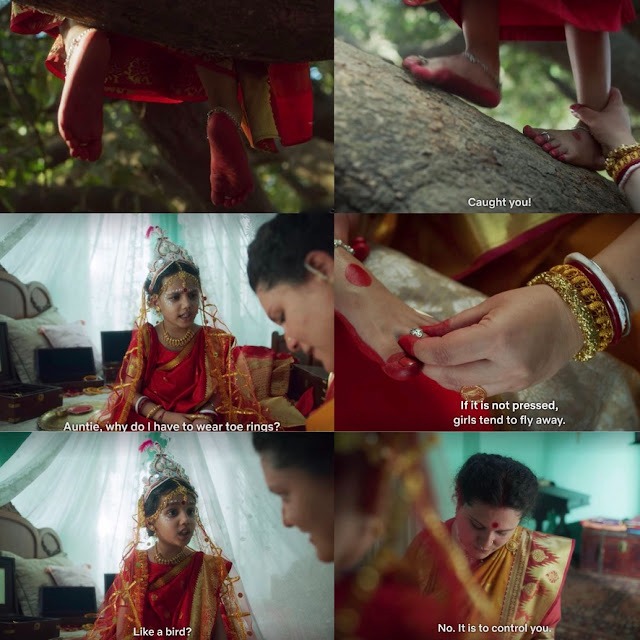
(Source: India Independent Films; Image one, depicts Paro running and Alta thal spilling on the news of her lover. Image two is a still from the opening scene of Bulbul which depicts her as a child bride)
Gradually the traditional Alta designs have been subdued by Mehendi because of the latter’s longevity. However, still, many of the popular cultural references in movies have kept the tradition alive. The most iconic reference can be seen in the movie Devdas (2000) where the Alta signifies the loyalty of Paro, the protagonist towards her lover. Not to forget, the scenes where the Thali of Alta is spilling as Paro runs to the news of her lover’s illness and leaves behind the trail of red steps, her hair and white saree flying further adds to the intensity of the scenes. Alta in these scenes is a representation of her love for her partner and then the loss of this love. It can also be seen when she joyfully dances to the song ‘Dola-re-Dola’, where her hands beautifully adorn the red Alta designs. Another reference to the significance of Alta in Bengali culture can be seen in the horror-movie- ‘BULBUL’ on Netflix. The opening scene depicts the young Bulbul’s feet painted with Alta symbolizing the married status of that girl child. Later on, Bulbul picks on Alta as a symbol of Suhaag and beauty.
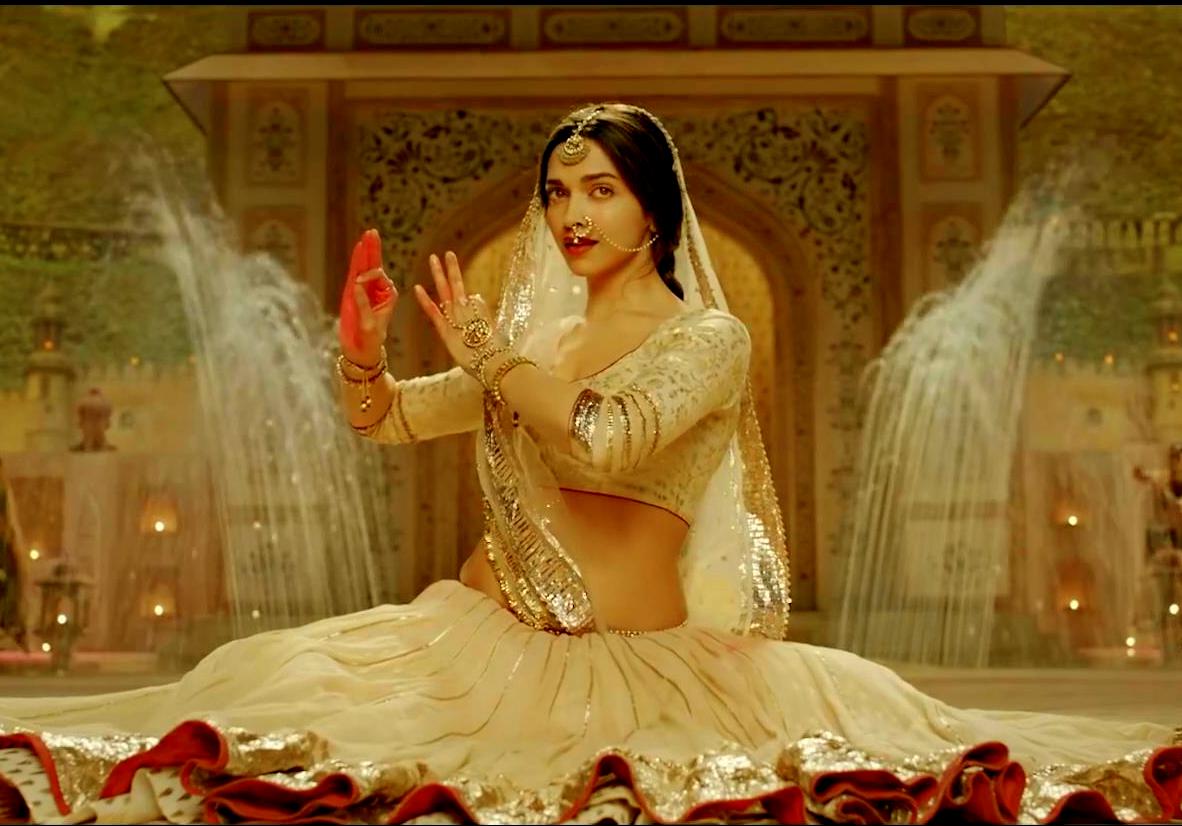
(Source: India Independent Films; A still from the song ‘Mohe rang do laal’)
When talking about Krishna and Alta, how can one forget the reference to the famous song ‘MOHE RANG DO LAAL’ from the movie Bajirao Mastani! Performing in the context of Holi before Bajirao, Mastani can be seen with her hands soaked red in Alta. The red color of Alta here depicts her love for Krishna and her desire for his loyalty and affection. In a way by singing for Krishna to put the red colour on her, she is confessing her love to Bajirao. Alta is also redefined through fashion in current times, The brand Torani recently in their series ‘Seven sacred sins’ showed women and transwomen both adoring Alta. Thus, trespassing the gender norm associated with Alta. In the current times, when the Red lipstick represents boldness and beauty. It’s time for the Indian people to take pride in their indigenous red henna – Alta and adorn it with utmost pride and honor. Otherwise, with time it will get restrained to just movies, commercials, and dance.
REFERENCES
https://shefali-shanker.medium.com/did-you-know-about-this-scared-red-liquid-1561177fea81
- September 18, 2023
- 7 Min Read



